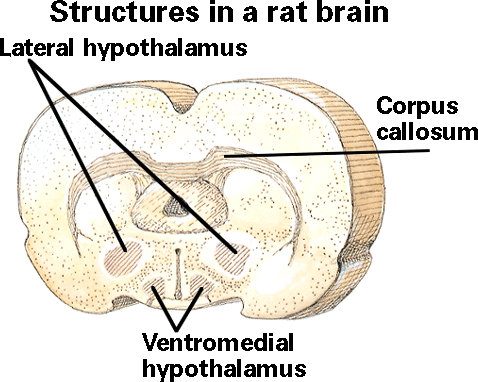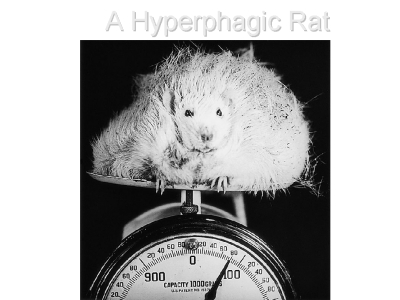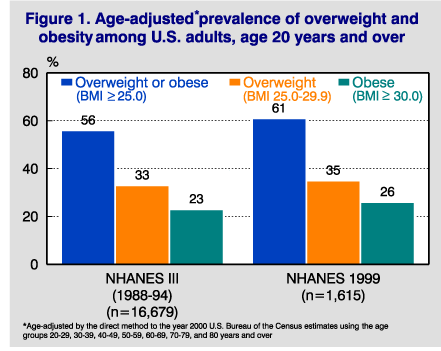A lesion is a small surgical cut made with a scalpel.
Lesions in the Ventromedial Nucleus (VMN) produce hyperphagia.
Hence, the VMN is the "stop-eating center."
Lesions in the Lateral Hypothalamus (start-eating center) produce aphagia.


Motivation & Emotion
(Try the Tutorial!)
What is "a motive?"
Need: a state of deprivation
Drive: a condition of arousal in an organism that is associated with a need.
Instinct Theory - (called Fixed Action Patterns in animals) - "an inherited disposition to activate specific behavior patterns that are designed to reach certain goals."
Freud thought so. See p. 285.
Eros - the life instinct (survival & reproduction)
Drive Reduction Theory
Distinguishes between acquired drives and primary drives, which are unlearned.
Homeostasis - the tendency of the body to maintain a steady state.
Humanistic Theory
The view that the behavior of people is motivated by the conscious desire to grow.
No sense studying animal motivation. People are special!
Leads to Maslowís Hierarchy of Human Needs. (See Fig. 9.1;
p. 287.)
Cognitive Theory
Cognitive Dissonance Theory says that we seek harmonious beliefs and justify our behaviors in order to make sense of them.
Social-Cognitive Theorists argue that people are motivated by their expectations.
Does thinking give rise to motivation?
Sociocultural Theory
Hence, culture-specific motives arise.
E.G. self-actualization occurs within a sociocultural milieu.
A lesion is a small surgical cut made with a scalpel.
Lesions in the Ventromedial Nucleus (VMN) produce hyperphagia.
Hence, the VMN is the "stop-eating center."
Lesions in the Lateral Hypothalamus (start-eating center) produce aphagia.


Defined as weight in kilograms divided by height in centimeters squared.
Or do it this way:
(weight) X 704 = A
Height in inches, squared = B
BMI = A/B
Healthiest BMI is less than 25.

25-50% of Americans are dieting.
Illnesses associated with obesity include: heart disease, diabetes, gout, respiratory problems, apnea, Alzheimer's Disease, and some cancers.
Lots of psychological distress occurs too!
These motives are thought to be largely innate. Animals have them too.
There are lots of individual differences.
Are you a "Sensation Seeker?" See p.296.
In famous Sensory Deprivation Studies at McGill University Sís found sensory deprivation to be boring and aversive.
See page 297.
Effort Justification - the tendency to seek justification (acceptable reasons) for strenuous efforts.
See Table 9.3; page 305.
The Cannon-Bard Theory
The Schachter-Singer
Theory of Cognitive Appraisal (See p. 308.)
The polygraph is an instrument that measures heart rate, blood pressure, respiration rate, and perspiration.
Arousal means "readiness to respond."
But do polygraphs really detect lies? (NO!)